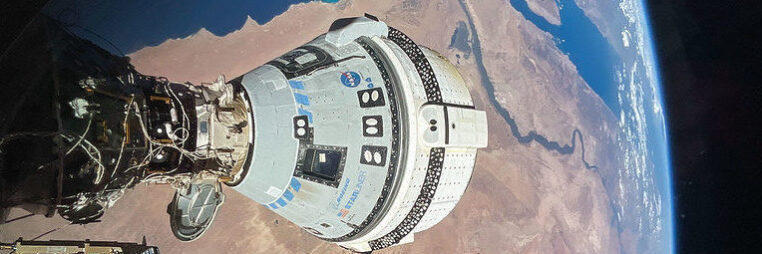Boeing’s Starliner spacecraft docked to the International Space Station. Source NASA via Flickr
The Boeing Starliner, initially expected to return to Earth with astronauts Sunita Williams and Barry Wilmore, is now scheduled to return on 6 September without them.
The two astronauts, both members of NASA (National Aeronautics and Space Administration), are now set to remain on the ISS (International Space Station) until February 2025.
The astronauts’ new return date extends their eight day mission into an eight month venture — they will live on the ISS with other astronauts until their return.
“I love being up here and I love floating around,” Williams reported.
Since the pair’s arrival at the ISS, Wilmore has radioed Mission Control and reported a pulsing sound from a speaker inside the Boeing Starliner capsule.
The ground team has confirmed it sounds “almost like a sonar ping”.
The sound has been predicted to be related to the connection between the space vessel and the ISS, or an issue inside the aircraft.
As William and Wilmore live on the ISS, they have been conducting tests on the Starliner. Further reviews will be completed once the Starliner returns to Earth.
The decision for the Boeing Starliner to return to Earth without the astronauts was made due to detected helium leaks and thruster fails.
The helium leaks were detected hours after the launch and increased during the mission. Helium is used to push propellant to the thruster systems that are used for manoeuvre.
The SpaceX Dragon capsule is set to return the two astronauts to Earth.
Founded by Elon Musk, SpaceX is a private company that has been favoured over Boeing as the leading competitor.
Elon Musk aims to utilise space as a place of habitation. In 2021, Musk said, “We need to get back there and have a permanent base on the moon — like a big permanently occupied base on the moon. And then build a city on Mars to become a spacefaring civilization, a multi-planet species.”
According to Peter Vanham, a business writer and media specialist, Musk believes in saving our species more than saving the planet.
SpaceX is valued roughly at US $210 billion ($311 billion).
As of 3 September, there are 10 people living and working in two different space stations.





